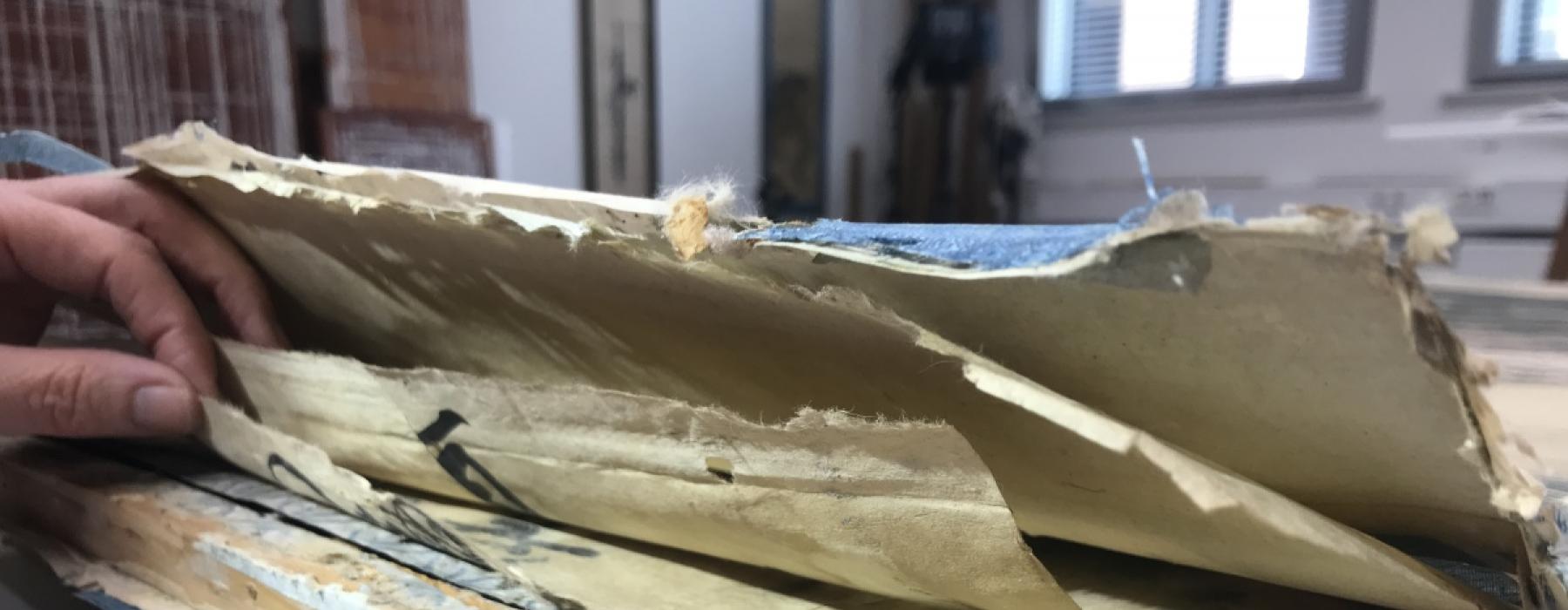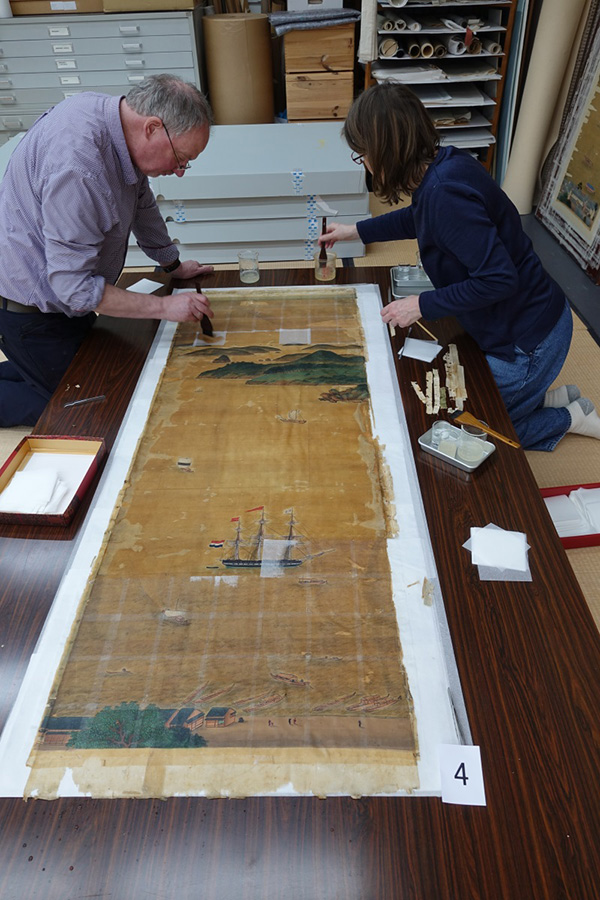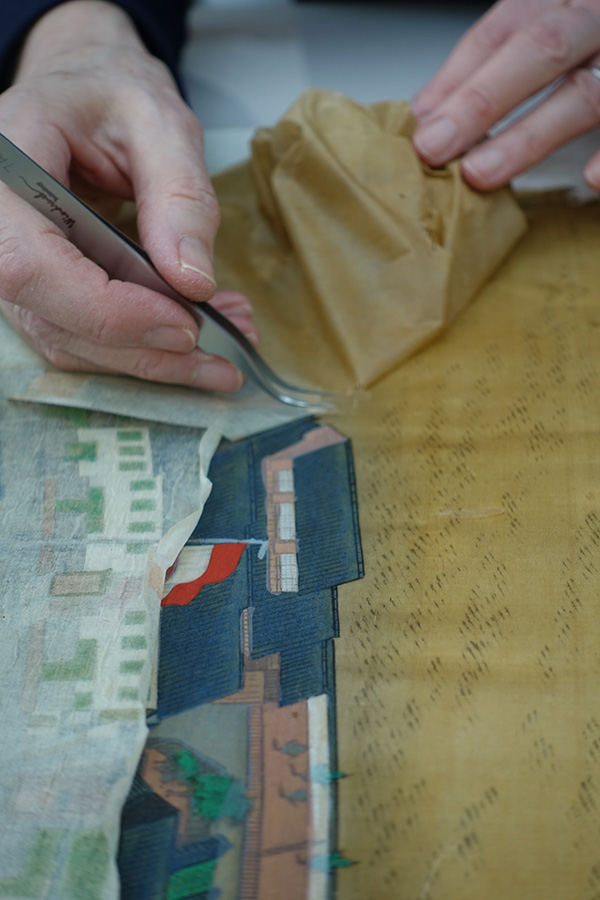
First, some reassuring news: in spite of the current corona crisis, restoration work is continuing every day. The restrictions have their impact, however. For instance, Restorient has welcomed Naoharu USAMI, restoration specialist from Kyoto, to Leiden several times. The studio invited him again for further assistance with the treatment, but that visit has been postponed for the time being. Yet, Usami-san is continuously supporting the restoration with his expert advice and preparation of materials, even from afar at his studio Shūtokudō.



